David Harris is a careful reader of current Mormon literature. Here are his reviews of novels written by or about Mormons in 2019.
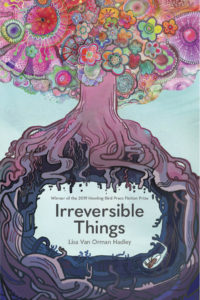 Irreversible Things by Lisa Van Orman Hadley
Irreversible Things by Lisa Van Orman Hadley
This fictionalized memoir was a pleasure to read and is a worthwhile addition to the growing corpus of Mormon literature.
The author plays with structure and form from chapter to chapter, almost as if it’s a teenage journal she is scribbling and doodling in from day to day. Indeed, the psychedelic tie-dye design on the cover and the matching bookmark which comes with the book seem as if they are meant to convey that impression.
Some chapters are lists, others are short haiku poems, yet others are written in traditional chapter format. One chapter is written in the style of a Choose Your Own Adventure book, where the reader is directed onward to one or another page depending on the choice you make at the end of another. You’re just never quite sure what you’re going to get when you turn the page, and I thoroughly enjoyed that.
The author paints a loving portrait of her parents as she describes her life growing up in the Florida Panhandle with an older sister and two older brothers. She doesn’t gloss over the embarrassing moments as she describes navigating her first crush, her experience being the only Mormon kid in her class, a short stint babysitting, and a slumber party where she is forced to share her best friend Emily with a trio of Jennifers whom she has never met before.
I loved reading about her family life, with frequent trips to the beach and occasional journeys to Utah and Idaho by car to visit grandparents and cousins.
Her mother, who was raised in Utah, frequently complains about how difficult it is to find your way around in Florida without the Utah mountains to use as a reference point. With her father, she pursues the path toward creating the best possible Reuben using the finest available ingredients. They eventually even devise a recipe for mixing up their own Thousand Island dressing.
When Halloween falls on a Sunday, her mother sends her and her brothers out trick or treating the night before, which thoroughly confuses the neighbors, who haven’t encountered the Utah tradition of shifting an event to another evening in cases where holidays like the 4th of July or New Year’s Eve occur on the Sabbath day.
At 153 pages in length, it’s a very quick read, and a very pleasant one. I highly recommend it.
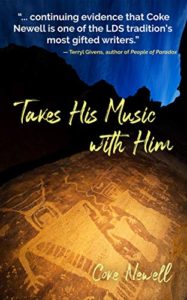 Takes His Music with Him by Coke Newell
Takes His Music with Him by Coke Newell
Redrock wilderness. Isolation. Faith. Politics. Desperation. In the shadow of Utah’s remote and sacred Bears Ears buttes unfolds a contemporary drama of conflict both internal and external.
Nearing the end of his final term, President Barack Obama established a new national monument in a remote section of the Colorado Plateau known for centuries to five tribes of Native American peoples as ‘the Bears Ears.’ Considered one of the most archeologically rich and culturally significant landscapes in the world, many felt it was long overdue for federal protection. Less than one year later, incoming President Donald Trump gutted the Monument in both size and management priority, creating what many have called ground-zero in a veritable war zone over environmental values, and perhaps the single greatest affront to public land policy in modern American history.
Against this backdrop, what begins as a story about one man’s search for his young son lost in the labyrinthine redrock canyons of southern Utah soon evolves into an intimate study of pride and prejudice, pitting its central characters against time, the elements, and themselves in a moving tale exploring themes of heritage (Mormon and Navajo), community, alienation, personal religious faith, and personal worth. Moving, evocative literary fiction about place, and about one’s place within it, Takes His Music with Him is ultimately a story about honor, devotion, and change.
After young Truman Eisenberg is left an orphan in post-World War II Germany, he immigrates alone to America, where he eventually falls in love with Debora Lauer, the Austrian-American daughter of his “sponsors.” Truman and Debora soon convert to the Church of Jesus Christ of Latter-day Saints and move to join the community of “the Saints” in the West; specifically, the redrock desert town of Blanding, Utah. For more than 30 years they rejoice in the landscape but feel socially marginalized amidst the provincial paradigms of that small, rural community. But their greatest wound is the inability to have a child… until the day Truman discovers a two-month-old infant swaddled ceremoniously and left to die in the high branches of a tree. After great effort and a long wait, Truman and Debora are allowed to adopt that orphaned child, a Navajo boy they name Henry; a boy they love very much.
But Henry lives mostly inside his own head, all too aware of his unfortunate beginnings, awash in the fear that he is of no present worth to anyone, but determined to find out if that is true or to die trying. Shortly after his 13th birthday he leaves Truman and Debora a note and departs on foot for a Vision Quest somewhere deep in the slot canyons east of the sacred Bears Ears buttes, the sacred Ná honidzo of his blood ancestors whom he never knew.
At 69 years old, riding a horse one-third that age, Truman goes after him. This is the story of that rescue.
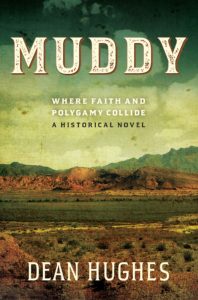 Muddy: Where Faith and Polygamy Collide by Dean Hughes
Muddy: Where Faith and Polygamy Collide by Dean Hughes
I have to admit that I wasn’t expecting much from this novel. For one thing, I often find Deseret Book publications to be somewhat simplistic and uninteresting, and, for another, I could hardly believe that a book sanctioned by the LDS Church would treat polygamy so honestly and in such painful detail while also illustrating its positive points in the lives of those who lived it. After all, the Church doesn’t have much to gain from dwelling on that mostly embarrassing chapter of our history. So I have to say, I was pleased and very surprised at how good the book ended up being.
It’s an excellent novel and one that illuminates an important chapter in Pioneer history. And that’s why it edged out four other worthy titles to earn first prize in fiction in this year’s annual book contest by the Association of Mormon Letters in conjunction with its annual conference of which I was a judge.
I enjoyed the detailed descriptions of journeying through the rugged Utah and Nevada wilderness, presumably somewhat close to the route of today’s I-15, with the treacheries of steep, snowy mountain passes and precarious river crossings.
The depictions of Brigham Young and other prominent people of the time, too, were fascinating, and I intend to take the author’s advice and look up some of Brigham’s conference talks in the Journal of Discourses.
During the first half of the novel, we get to know Morgan and Angeline very well. They have known each other all their lives, and it turns out that each has contemplated the notion of being married to the other long before it actually comes to pass. It happens suddenly when Brigham Young summons a young Morgan from Farmington, Utah to his office in Salt Lake City and tells him he is being called to the Muddy River mission, instructing him to find a wife and get married before leaving for the mission in two weeks.
The difficult decision to take a second wife comes about halfway through the novel. Neither Morgan nor Angeline have any interest in complicating their marriage by adding another party, but they do so due to some arm twisting on the part of their leaders. There’s nothing easy or fun about it, but they manage to find some few unexpected blessings as a result of the decision. Still, they never stop believing that their lives could have been much different had they not accepted that call.
If you enjoy reading this novel, I highly recommend another novel involving Mormonism’s polygamous past that also came out within the past year (2019) entitled The Glovemaker by Ann Weisgarber. Set in the once remote orchards in Fruita, Utah; this novel tells a very different story, one of people who have distanced themselves from the LDS church, some because of polygamy, others for other reasons. Despite the antipathy they feel toward polygamy, they help fugitive polygamists who pass through their settlement on their way to a place of refuge on a nearby ranch, and they do so at great personal risk.
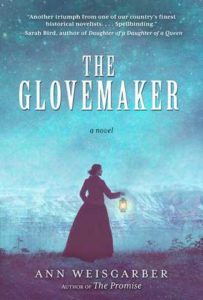 The Glovemaker by Ann Weisgarber
The Glovemaker by Ann Weisgarber
If you’ve ever visited the orchards in Fruita, Utah at Capitol Reef National Park, you might enjoy this novel, which is set in the area surrounding those orchards in pioneer times. (In the novel, the town is referred to as Junction, which is a bit confusing since there actually is a town called Junction elsewhere in southern Utah. But the author explains in the notes at the end of the book that the setting is Fruita, which was formerly called Junction.)
It’s hard for us today to imagine just how remote a place Fruita was back in the late 1800s. It’s definitely off the beaten path, don’t get me wrong. But, given that I can drive there from my home in Salt Lake City in approximately three and a half hours, it’s hard to see it as truly remote in this day and age.
The story is set in the chill of winter, which makes you feel the remoteness all the more keenly. Deborah, the main character, lives on the edge of the settlement, and strangers passing through the area come to her house first as they emerge back into civilization from a particularly difficult eight-mile stretch of wilderness dubbed “the Wastelands” by locals.
From time to time, she gets a knock on her door from a polygamous husband on the run from the law. She and her husband, Samuel, who is away on business throughout the course of the novel, help these men out as best they can even though they themselves don’t believe in polygamy.
Townspeople who give aid to these fugitives risk a great deal by doing so. Federal agents, who are never very far behind the fugitives, have been known to burn down houses, barns and orchards in retaliation for their owners’ harboring their polygamist brethren. And there are rumors that people have even lost their lives as a punishment. Yet still they help even though they have come to this distant outpost specifically to get away from what they feel is too heavy-handed a church bureaucracy.
I highly recommend this book to those with an interest in local Utah history but also to those who just want to immerse themselves in a good story. This one is definitely a page-turner.
Weisgarber brings Deborah, her neighbor Nels, and several other characters alive through her descriptions of their inner thought processes and their interactions with each other and especially with the outsiders who come in pursuit of the fugitives.
I particularly liked the book because I felt it had no agenda, pro- or anti-Mormon or otherwise. I recommend that you read it along with Dean Hughes’ Muddy: Where Faith and Polygamy Collide, just to get a couple of varying perspectives on this odd practice which is such an anomaly in American culture.
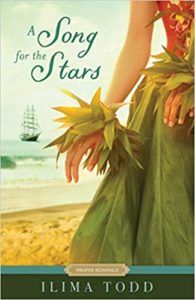 A Song for the Stars by Ilima Todd
A Song for the Stars by Ilima Todd
This book recounts the history of the earliest European encounter with Hawaiians, which occurred in the late 1770’s with the arrival of Captain James Cook. It’s written in the style of a romance novel, but it’s actually much better than a romance novel. Aside from it’s elegant prose, the novel incorporates a lot of actual history into its plot.
The story is told in the voices of the two main characters, a Hawaiian princess and a British officer. The descriptions of lush greenery and the colors and moods of the sea along with the colorful clothing of Hawaiians are rich with imagery.
Michener’s Hawaii covers several different periods of Hawaiian history while this book focuses on just one, the first contact of Europeans with Hawaiians.
 Maggie’s Place by Annette Haws
Maggie’s Place by Annette Haws
Maggie’s Place is not a bad effort and is a reasonably enjoyable read. As a resident of Salt Lake City, it was fun for me that I could easily picture many of the locales which show up in the book. And I liked the main character, Maggie, and could sympathize with the struggles she has faced in her life and continues to face in retirement.
I sympathized with several other characters, as well, particularly the niece and the character who refers to himself as a thief. But I felt like some of the characters and some of the situations in which they find themselves were somewhat contrived, which distracted a bit from my enjoyment of the book.
 Whatever It Takes by Jessica Pack
Whatever It Takes by Jessica Pack
This slow-paced novel depicts life on a ranch outside Cheyenne, Wyoming. It’s a quiet and relatively thorough study of a woman who has managed to estrange herself from both her husband and her sole surviving parent.
The action shifts back and forth from the present day, i.e. roughly 2019, back to the mid-1990s when the main character was an infant growing up in urban Ontario with a mother she will lose long before she ever comes to know her.
The novel provides interesting insights into the differing perspectives of parents and their children, and it presents some surprising twists and turns along the way, which give the child new perspectives on what had previously seemed to her to be manipulative and traitorous behavior on the part of her father and anger or perhaps indifference on the part of her grandmother.
The novel is well written, with passages of great beauty scattered here and there throughout.
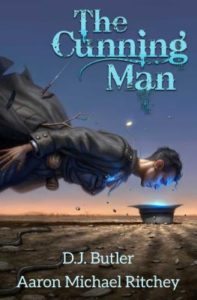 The Cunning Man by D.J. Butler and Aaron Michael Ritchey
The Cunning Man by D.J. Butler and Aaron Michael Ritchey
I’m not a big fan of fantasy fiction, but I wanted to read this book because it is set in an interesting corner of my home state of Utah, namely the environs of Helper, Utah, a historic railroad town near Price about a two-hour journey from Salt Lake City through scenic Spanish Fork Canyon.
Some of my favorite reading experiences involve long-distance car travel in the United States. Steinbeck’s Travels With Charley was fun, and I enjoyed On The Road to the extent that I could get past Jack Kerouac’s crazy ramblings and acrobatic sentence structures. William Least Heat-Moon’s Blue Highways was another memorable read, and Eddie Harris’s Mississippi Solo: A River Quest was a fascinating tale about traveling down the big river from its headwaters in Minnesota all the way to the Gulf of Mexico via canoe.
The Cunning Man starts off great with a journey from Lehi, Utah down to Helper. Hiram, the protagonist of our story, has enlisted the aid of his 17-year-old adopted son, Michael, to drive him to Helper to deliver aid from the Bishop’s Storehouse in Salt Lake City to miners suffering from an extended shutdown of a local coal mine. Michael is an agnostic with ambitions in the sciences, and he has a fun relationship with his father where they banter back and forth easily about both the merits and the follies of religious belief. But Michael has no idea that his father is a practitioner of supernatural arts who utilizes hexes and peep stones and other instruments of the occult to protect himself from witches and anyone else practicing bad magic.
The book contains fascinating descriptions of the town of Helper and its surrounding topography along with a healthy assortment of colorful 19th-century characters such as a general store owner with a strong German accent named Gus Dollar and a lawyer from Denver who goes by the name of Five-Cent Jimmy.
When it comes to story, though, I felt the book was lacking somewhat. A beast with three mouths living in a deep cavern under the mine which can materialize at will out of swarms of large flies, a pair of young twins who speak in perfectly synchronized chorus and a Cumorah-like stone box hidden up in the earth where only farmer-conjurer Hiram can find it are interesting features which add color to an otherwise formulaic and predictable tale. The historic props help, as well. But, in the end, I was left feeling like the opportunity was missed for creating a much more inventive tale.
Nevertheless, much credit goes to the authors for creating an entertaining story surrounding magic in Mormonism, a topic around which much speculation has swirled due to stories about the Prophet Joseph Smith’s activities involving digging for treasure and using a peepstone early in his career.
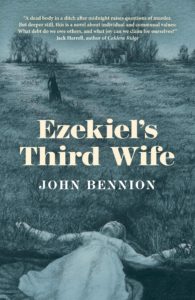 Ezekiel’s Third Wife by John Bennion
Ezekiel’s Third Wife by John Bennion
David did a full review for 15 Bytes magazine.
Paint Your Wagon Utah-style: John Bennion’s Ezekiel’s Third Wife
